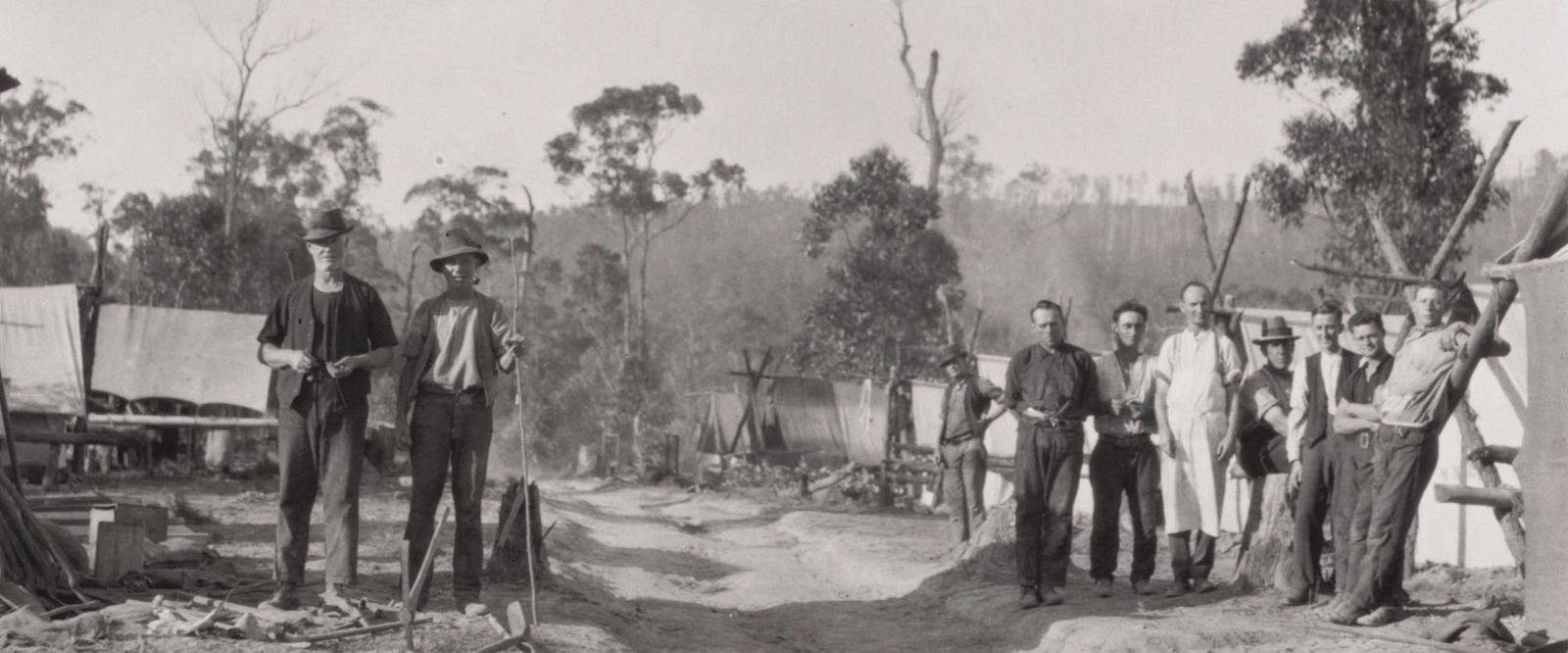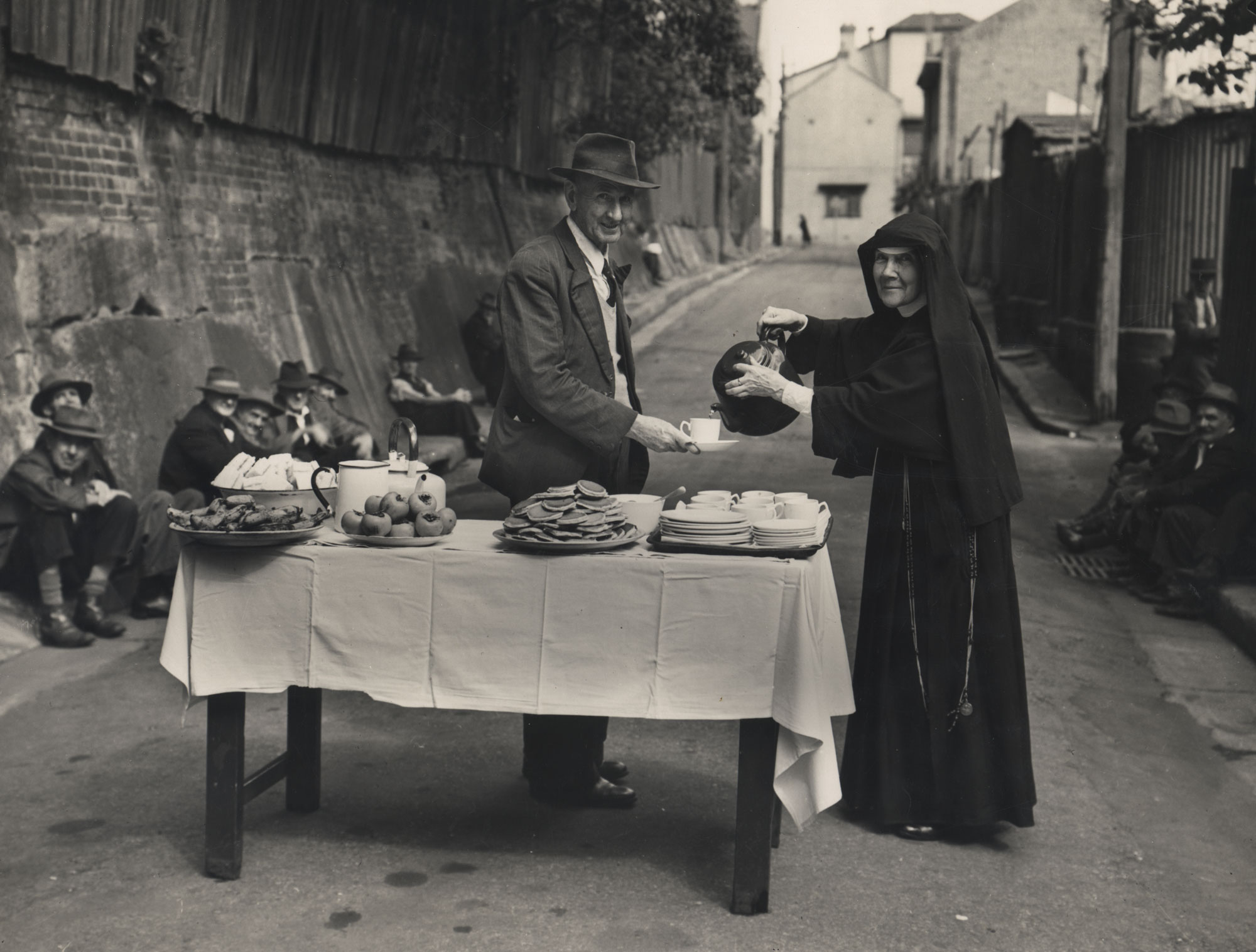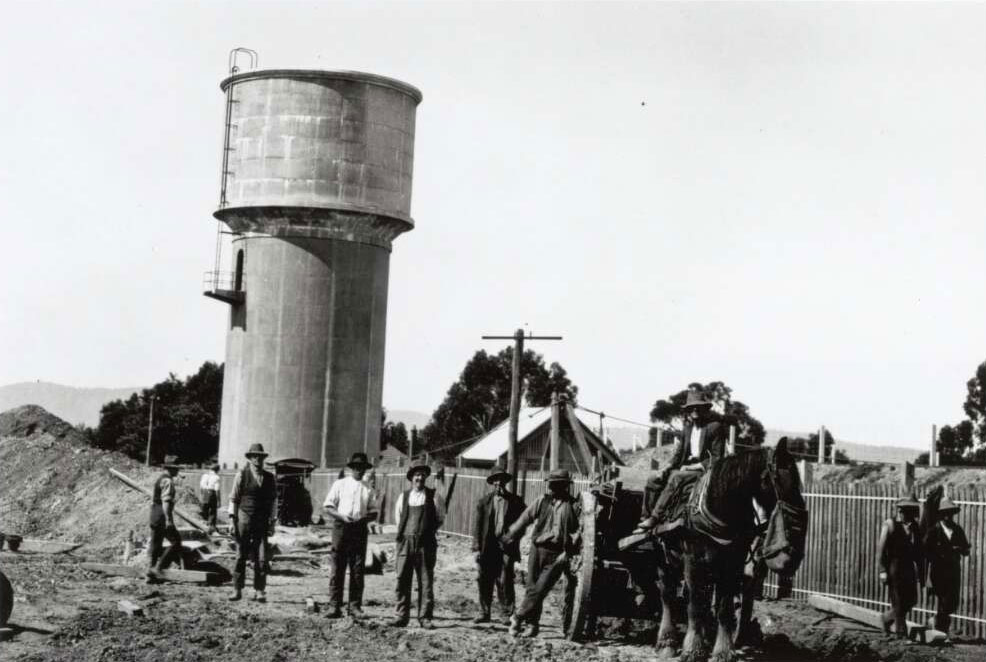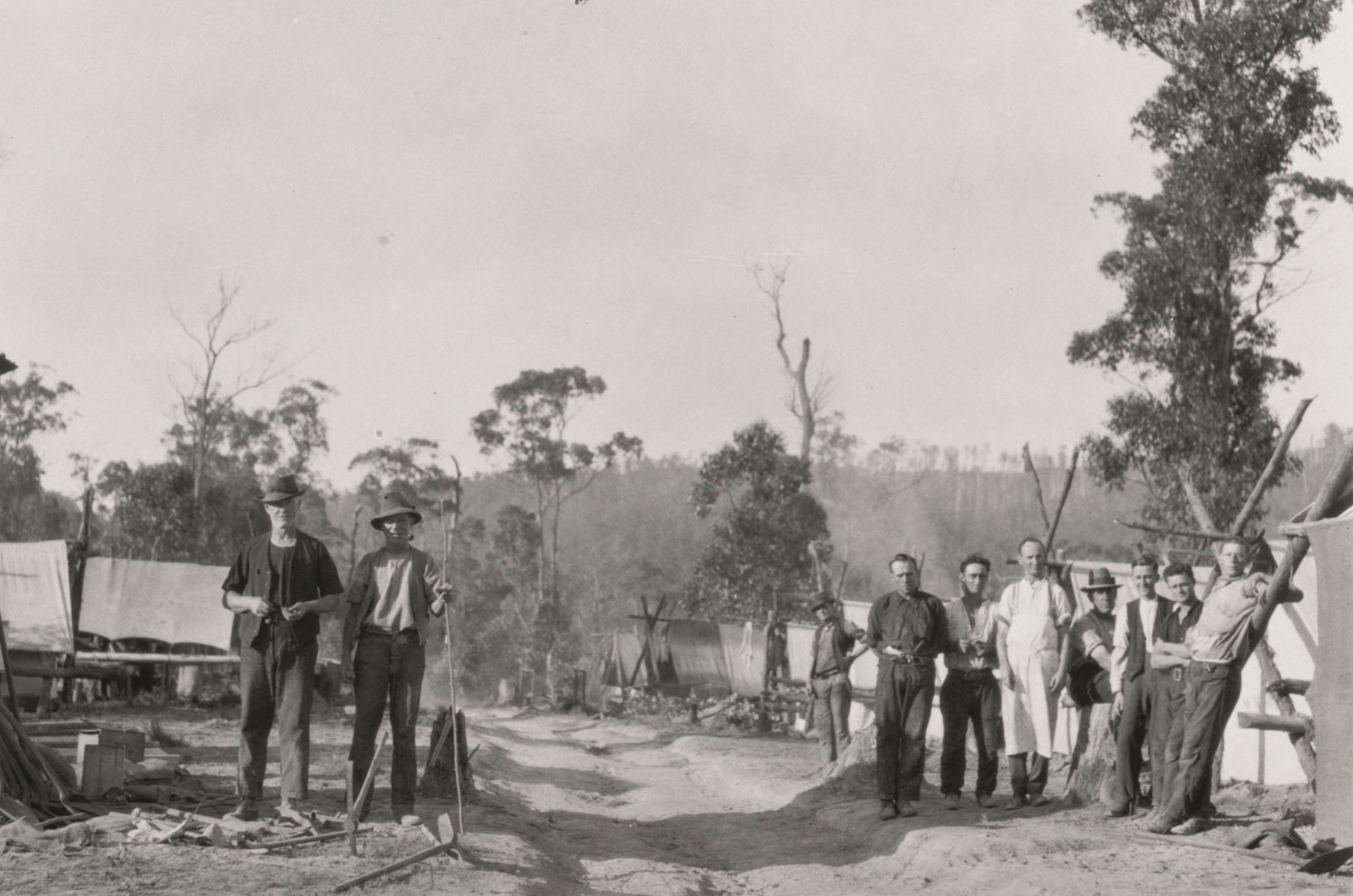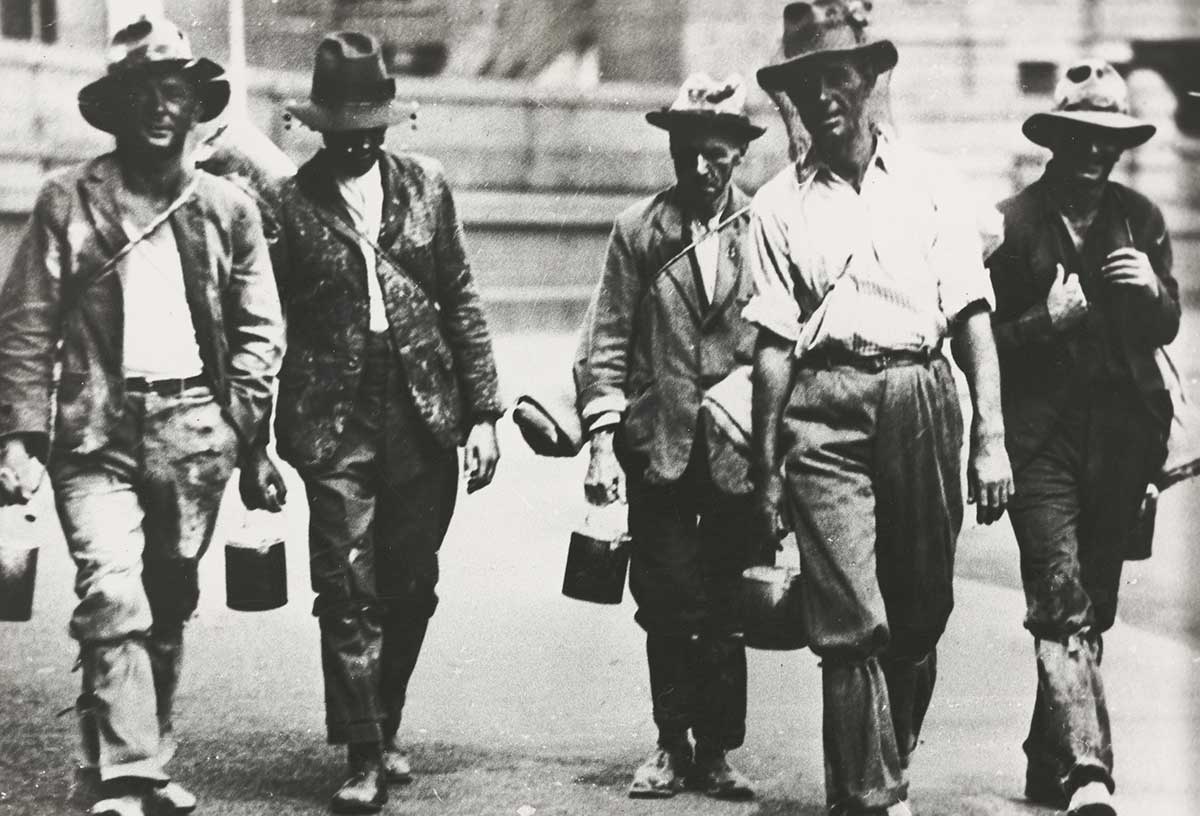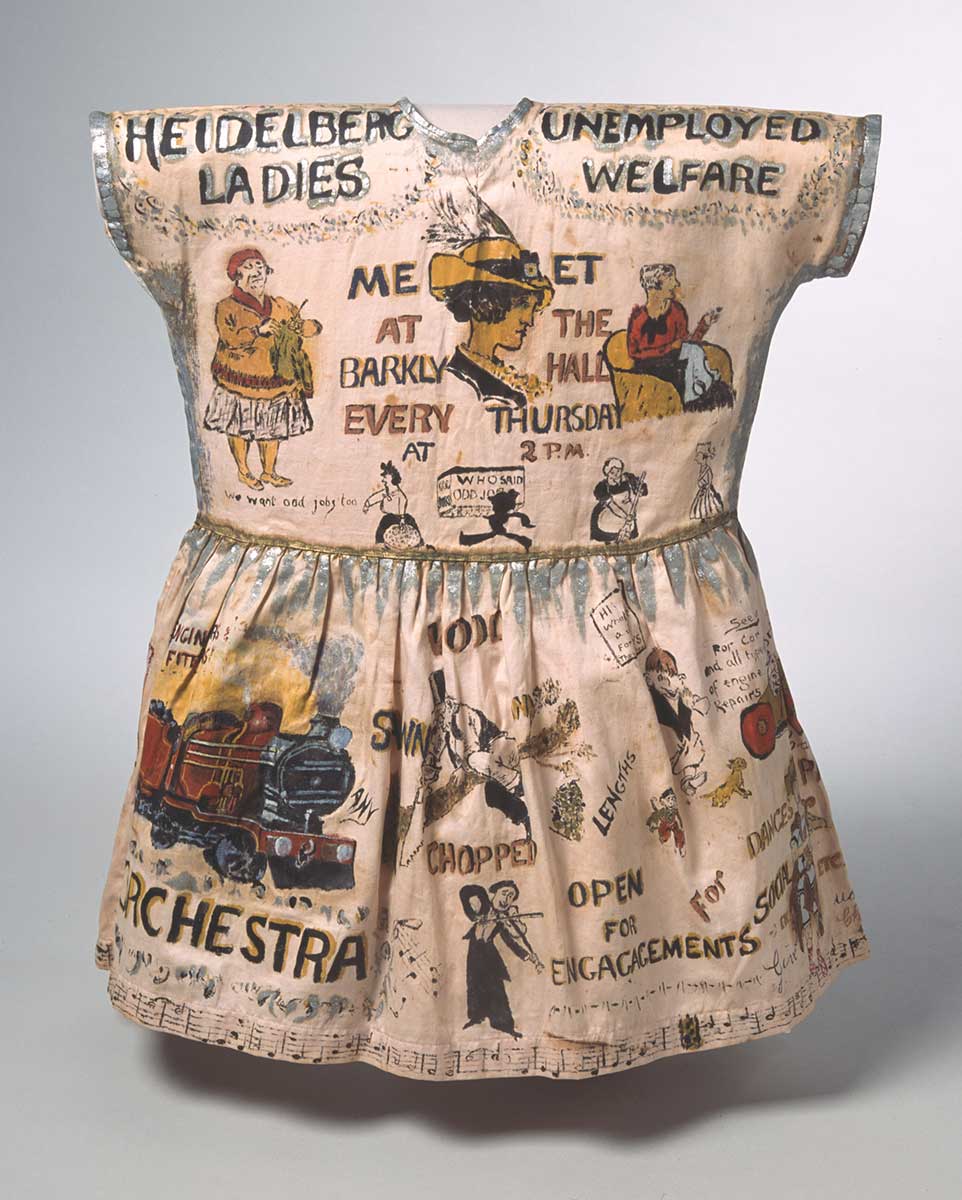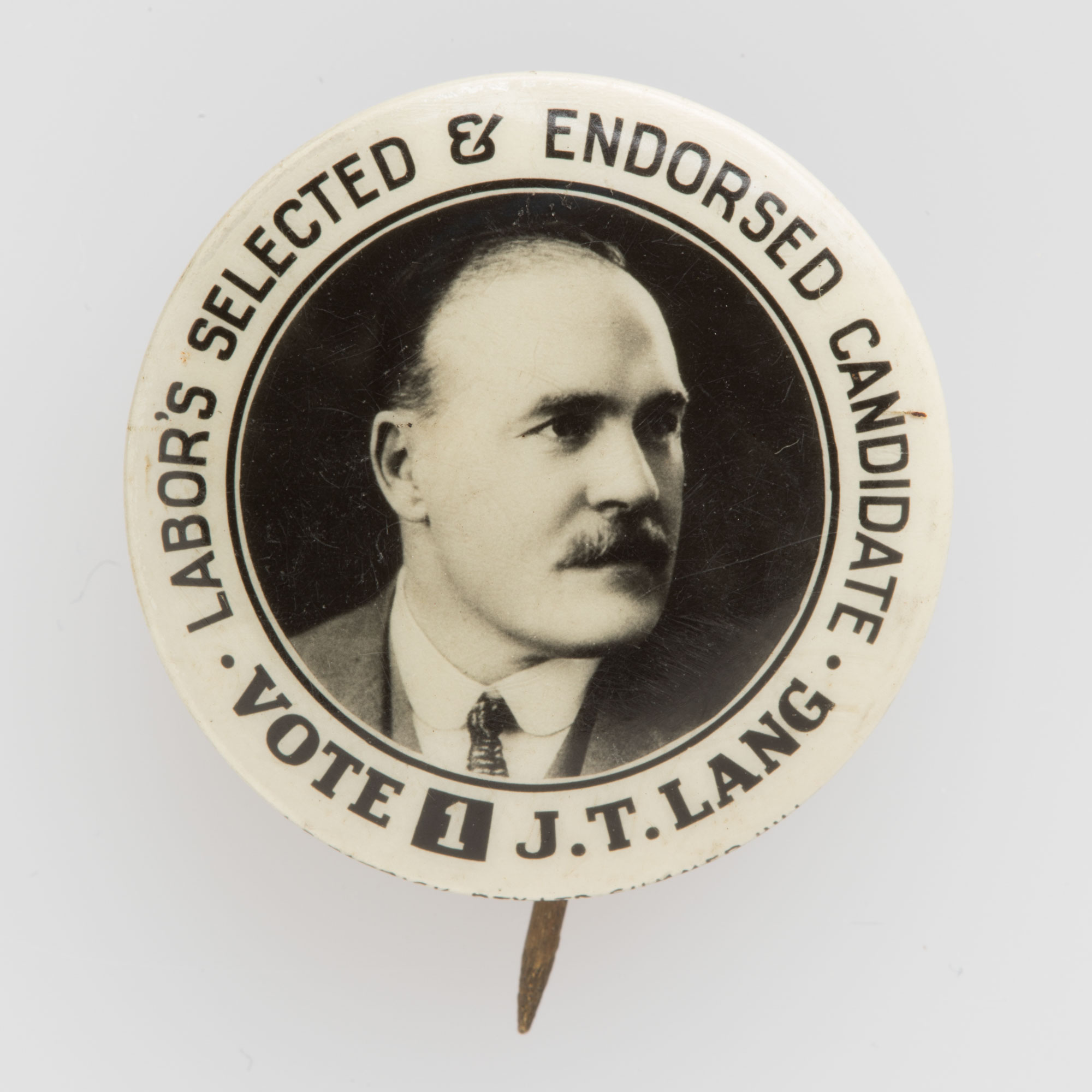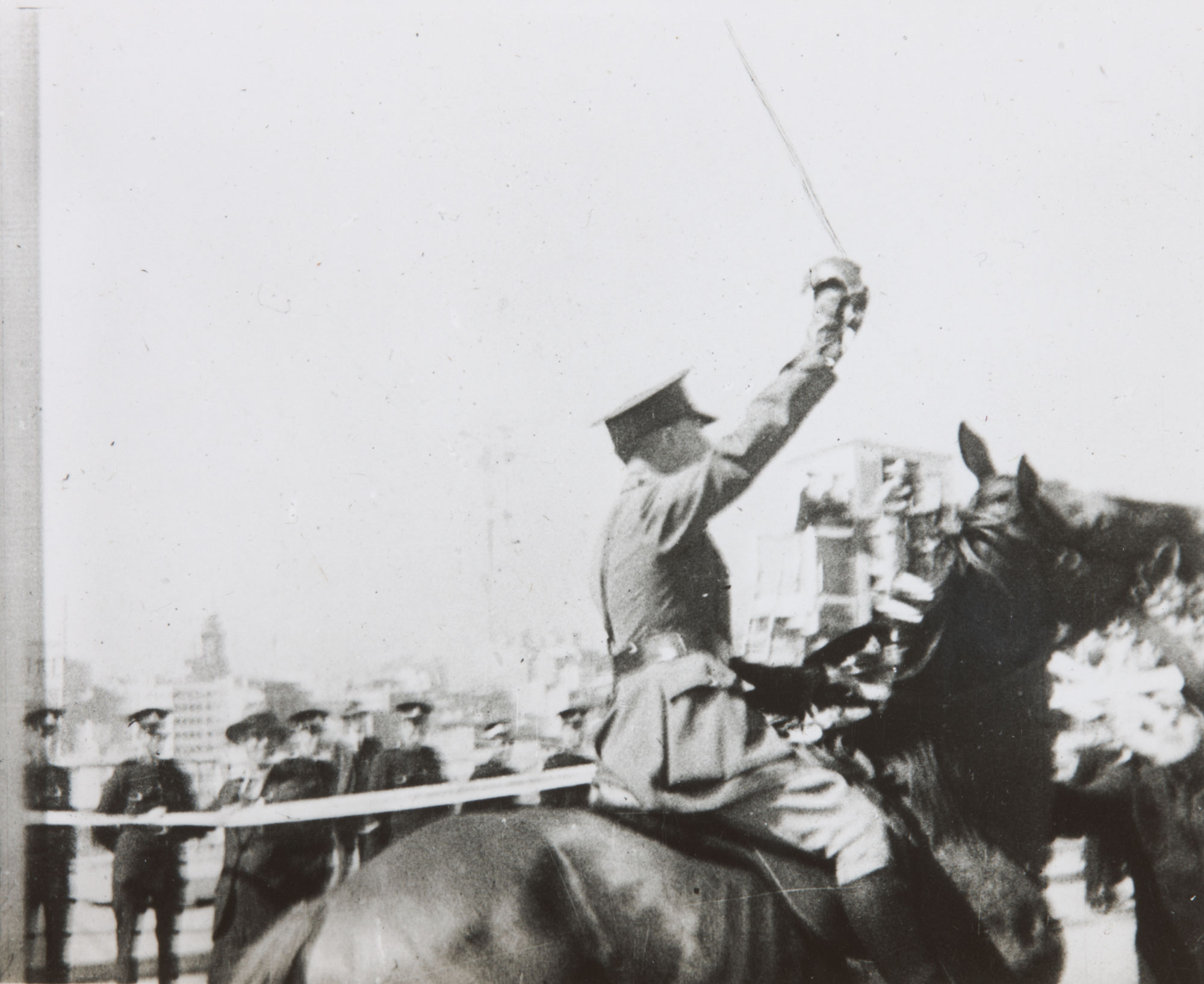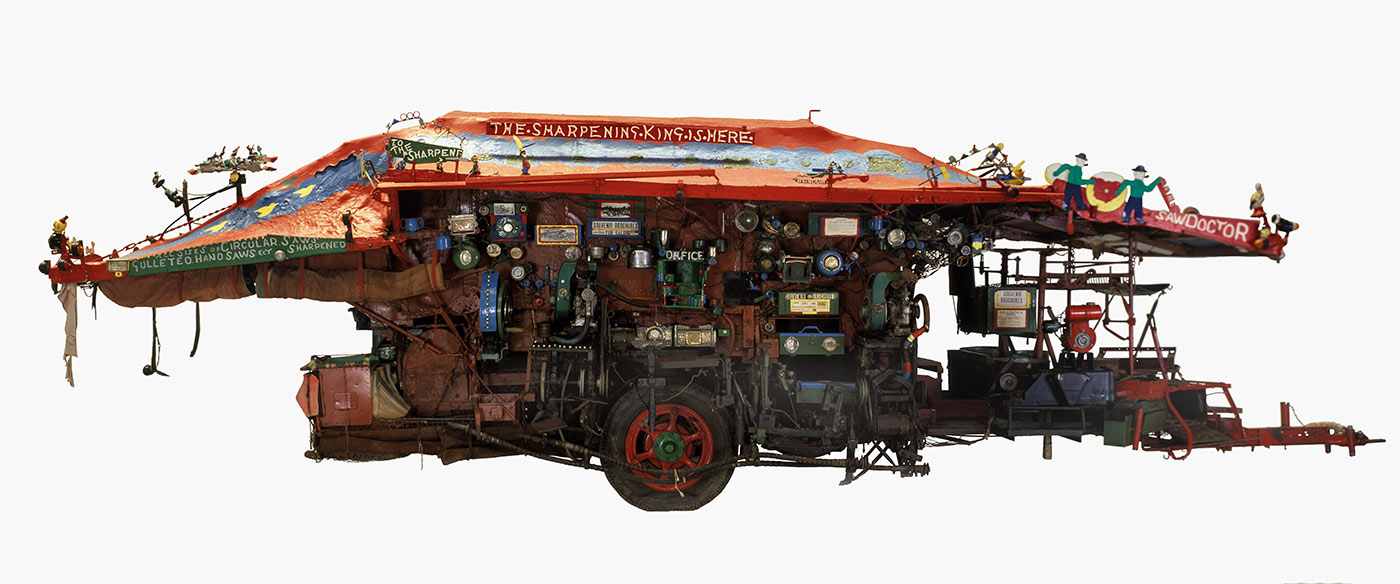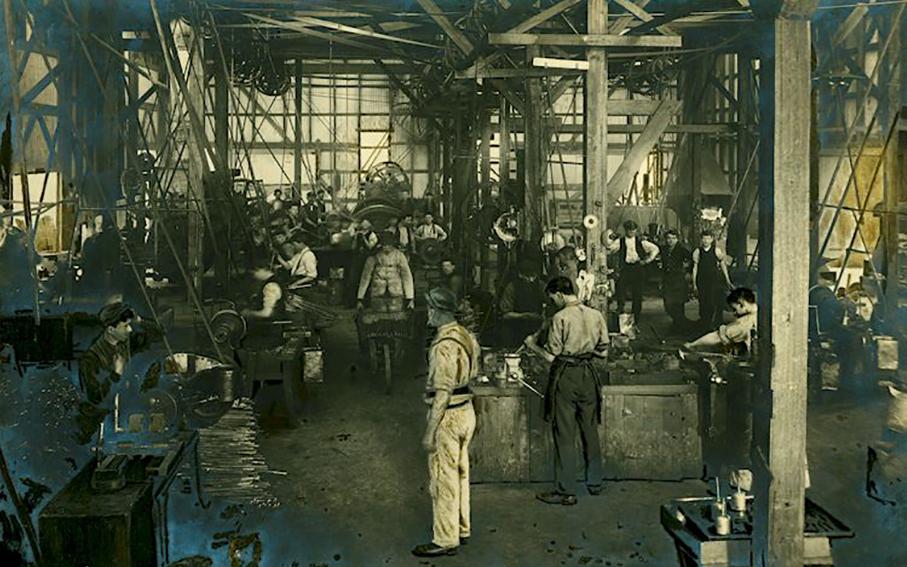‘We’re on the susso now’
1932: Height of the Great Depression, with 32 per cent unemployment
‘We’re on the susso now’
1932: Height of the Great Depression, with 32 per cent unemployment
In a snapshot
The Wall Street Crash of 1929 led to a worldwide economic depression and the collapse of the Australian economy. At its worst in 1932, unemployment in Australia reached 32 per cent. It took almost 10 years for the Australian economy to recover from the Great Depression, affecting people deeply for decades to come. It also radically changed economic thinking and policy in Australia.
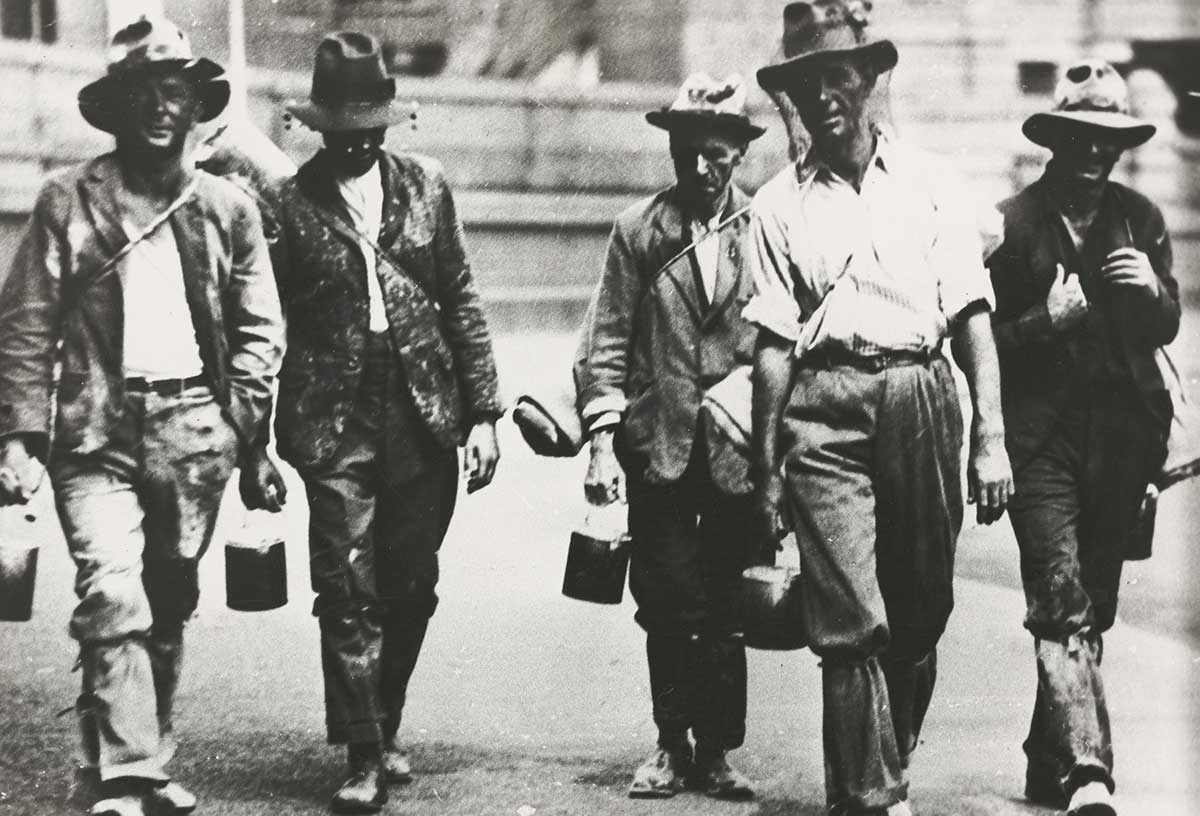
 Can you find out?
Can you find out?
1. How did different governments respond to the Great Depression in the late 1920s and the 1930s? Were they successful?
2. What was ‘the susso’, and why did many people need it?
3. What were the main effects of the Great Depression in Australia, and why did it end?
What led to the Great Depression in Australia?
The Australian economy, based largely on farming, was built on debt. All levels of government, but especially the state governments, borrowed from overseas banks to fund projects like farms, roads and bridges.
In the 1920s, Prime Minister Stanley Bruce tried to lower Australia’s £5.5 million deficit (over 600,000,000 Australian dollars in today’s money) by reducing government spending and people’s wages. This became increasingly unpopular and, as a result, he lost the 12 October 1929 federal election to Labor’s James Scullin. On 24 October 1929, the US stock market on Wall Street crashed, causing economic problems as far away as Australia.
Research Task
Read this article from the Sydney Museum on the Great Depression. Why does the author, Annie Stevens, argue that the Depression never ended for Aboriginal people?
‘We’re on the susso now,
We can’t afford a cow,
We live in a tent,
We pay no rent,
We’re on the susso now.’
How did the Australian Government respond to the Great Depression?
Scullin’s federal government raised taxes on imported and Australian-made goods, and reduced migration, but nothing worked. Federal Treasurer Ted Theodore argued for spending more money to improve the economy, while New South Wales Premier Jack Lang wanted to stop repaying the interest on bank loans from Britain. Another government minister, Joseph Lyons, resigned, and formed a new political party, the United Australia Party (UAP), which later won the 1931, 1934 and 1937 federal elections.
Lyons’ government reduced spending and kept paying interest to British banks, but it was spending by Australia’s states (rather than his policies) that eventually helped the economy to improve. Australia’s economic improvement was helped by Britain recovering at the same time. Because of these factors, by the outbreak of the Second World War in 1939, Australia’s unemployment rate gradually came down to 11 per cent.
How did the Great Depression affect Australians?
In 1932 unemployment reached 32 per cent, which meant that hundreds of thousands of Australians were out of work. At this time men were usually expected to provide money for their families, so unemployment made many feel powerless and embarrassed. Women, on the other hand, were usually expected to work in the home and care for their families, which became extremely difficult without their husbands’ wages.
Research Task
How did people cope with food shortages in the Great Depression? Do some research to find out.
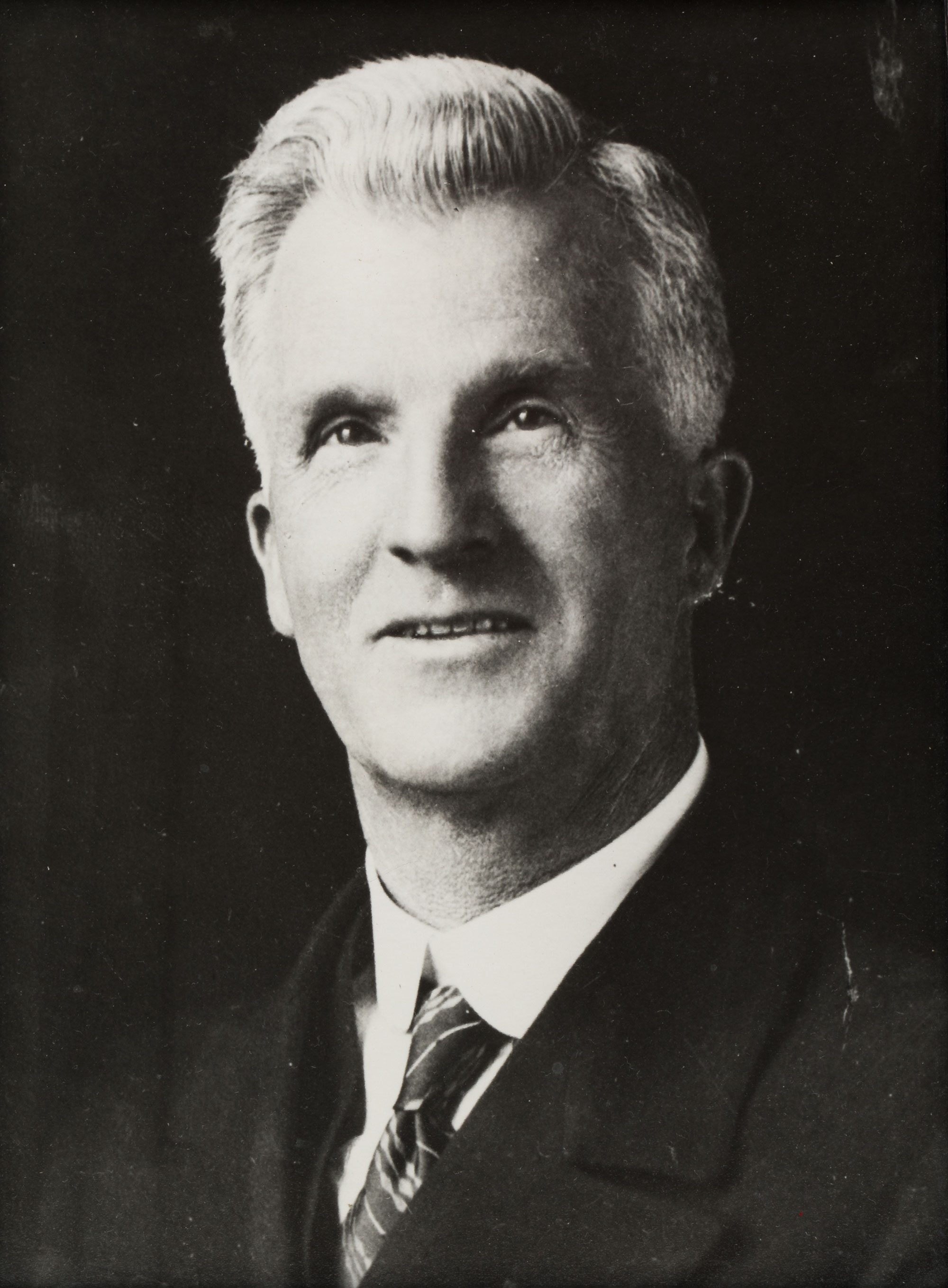
Suicide rates increased, and many people, including children, went without food. Charities tried to feed the hungry, but many couldn’t keep up with the number of people in need.
Over 40,000 men travelled around Australia looking for work, and along the way they set up small temporary towns and slept overnight in parks.
By 1932 more than 60,000 men, women and children depended on government payments for food, called ‘susso’ (short for ‘sustenance’), which allowed them to buy only small amounts of food. One Queenslander said that ‘Many spend more on a dog’ than the government spent on helping people survive. For families still recovering from the pain of the First World War, the Great Depression was a terrible event that affected people deeply for decades to come.
What were the long-term effects of the Great Depression?
The Great Depression had a huge impact on society and affected how future governments handled the Australian economy. In 1944 the government brought in unemployment and sickness benefits, and in 1945 governments (Labor and Liberal) increased support for public housing and university education.
Read a longer version of this Defining Moment on the National Museum of Australia’s website.
Research Task
What happened in the Great Recession of 2008? How similar or different was it to the Great Depression of the 1930s? Do some research to find out.
 What did you learn?
What did you learn?
1. How did different governments respond to the Great Depression in the late 1920s and the 1930s? Were they successful?
2. What was ‘the susso’, and why did many people need it?
3. What were the main effects of the Great Depression in Australia, and why did it end?






